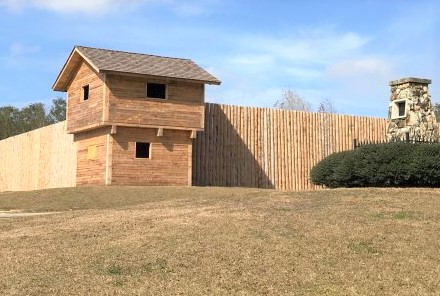Marion County commissioners and Ocala City Council members voted Tuesday to purchase two parcels of land – one of which contains a house – adjacent to the historic Fort King site.
The parcels total 1.32 acres of land and sit between the entrance to the Fort King National Historic Landmark and the area where the fort’s cemetery was once located along SE Fort King Street. The purchase price was $300,000 – the appraised value was $270,000 – and it will be split equally among the city, county and Fort King Heritage Association, which received a grant from the Felburn Foundation to cover its portion of the acquisition.

City Council members also agreed to pay closing costs of about $10,000 to acquire the parcels, which are owned by James and Janice Dobbs. The city has 45 days to close on the deal.
Acquiring the parcels was deemed a priority because of their proximity to the original forts, especially from an archaeological standpoint. Officials believe there is a high potential that the parcels housed ancillary buildings related to the fort and a portion of the old Fort King Road sits within the boundary on the north side of the land.
“Purchase at this time will preserve any remaining archaeological resources in context,” according to a memo from Ocala Recreation and Parks Director Kathy Crile.
The properties also were deemed a priority because they are situated between other parcels that have already been acquired as part of the landmark boundary, either through purchase or long-term lease. Acquiring the new parcels will allow the city and county to secure and control the frontage on Fort King Street that is crucial to the long-term success of the project, Crile’s memo says.
The City Council also gave its blessing to an agreement calling for about $13,000 annually to operate the site and one-time costs of $130,000. The house on the site will be used as a museum that is open to the public and the city anticipates use of the building as an Archaeological Resource Center, which will contain an archaeology lab; a viewing area for the public to observe the artifact conservation and preservation work; interpretive displays related to the archaeology at the site; artifact storage space; and offices.
The long-term plan calls for the existing visitors center and the Archaeological Resource Center to eventually be moved to a new Museum and Education Center at a different location on the site. When that happens, the existing structures will be taken down to provide a more historical landscape to the area around the fort, Crile’s memo says.

